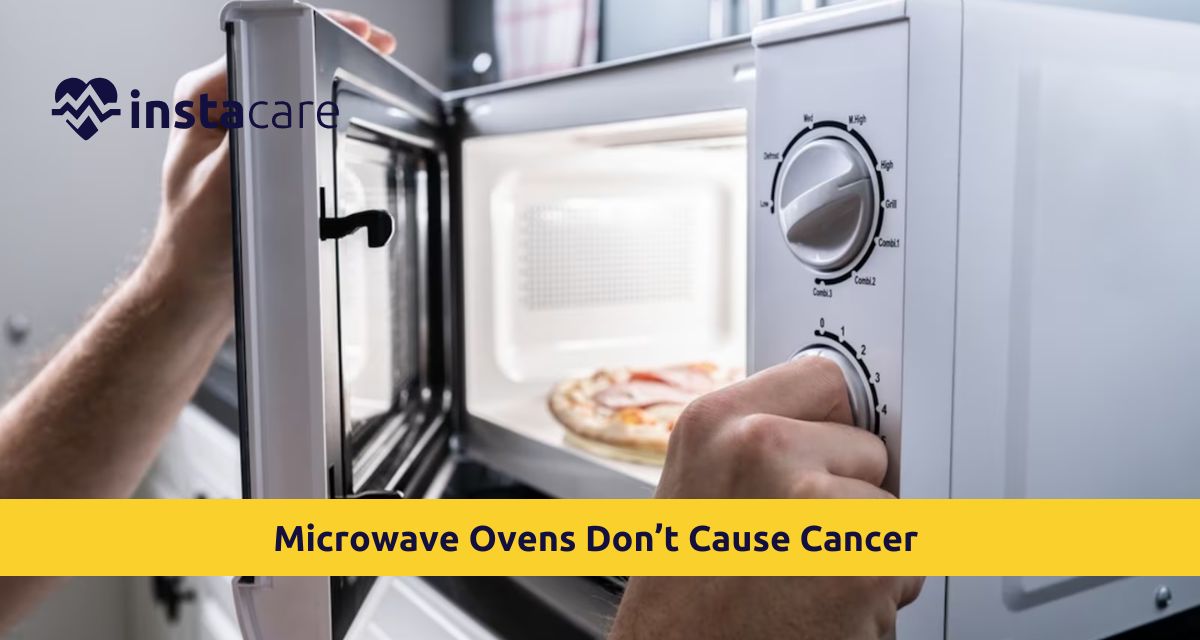Microwave ovens - it's one of those staples in the modern
kitchen. Now, it does help every homeowner really cook and reheat really
quickly and efficiently. However, despite this convenience, controversy and
debate brew regarding its safety, especially the health risks it poses about
cancers and the like. This report will deconstruct typical myths over microwave
ovens through science evidence and a focus on health benefits related to
microwave use for an all-rounded appreciation of microwave cooking.
Understanding Microwave Technology
How Microwaves Work
Microwave ovens work on electromagnetic waves, and
microwaves are the primary ones. Microwaves are a kind of non-ionizing
radiation. This is in sharp contrast to ionizing radiation, such as X-rays.
Ionizing radiation may have enough energy to ionize atoms and molecules or
damage cells.
When food is placed inside the microwave oven, these waves
penetrate inside the food, thereby forcing the water molecules inside to
vibrate in a resistance action, which creates friction and thus heats the water
inside. It cooks the food inside out with excellent efficiency to give nearly
uniform cooking. This efficiency has been one of the major reasons behind the widespread
acceptance of microwave ovens in almost every kitchen.
Safety Standards and Regulations
Microwave ovens have built certain safety features in their
designs to ensure that there is no microwave radiation. These include casing
and mesh screen covering the metal coating; this will ensure that microwaves
stay within the oven. The FDA has standardized regulations on microwave ovens
in the United States, thus ensuring that the appliance is used by the consumers
safely. These limitations encompass the amount of leakage which is allowed and
thus have rendered modern ovens safe provided they are used as instructed by
their manufacturers.
Microwave Ovens Cause Cancer
Myth: That one is just not working properly-the most popular
myth revolves around the idea that microwave ovens cause cancer. This comes
from widespread misconceptions about how microwaves work and the kind of
radiation they produce. Here are a few common ones:
- Microwaves Harbor Hazardous Radiation: Many people associate
the term "radiation" with harm. In reality, microwave radiation is,
in fact, a form of radiation, but it is non-ionizing and has no such energy to
break DNA or cells like ionizing radiation.
- Nutrient Loss: The strongest criticism against microwave
cooking is that all nutrients of the food are spoiled in the cooking process.
Though some degrees of nutrient loss do occur in the cooking process, this
trend cannot be attributed to microwave cooking alone. In fact, even
nutritional retention can be maintained more precisely in its natural forms of
the food when cooked in a microwave because it cooks a food item very quickly
and requires little water for the purpose, unlike any other methods of cooking.
- Plastic Containers: Warnings against heating plastic containers in the microwave fuelled fear concerning safety. For example, some plastics will emit harmful chemical fumes when heated, but most plastic containers are treated with a layer which allows cooking in a microwave without the contents being made toxic. Always look for containers that are labeled to say it is microwave-safe.
Scientific Evidence
Intensive scientific research has been performed concerning the non-risk effects of microwave ovens, as well as the effects of the microwave to the food. Consistent outcome in the research studies include:
- No Link with Cancer: No detailed study was ever able to find
scientific reasons to associate the utilization of a microwave oven with cancer
risks. Agencies such as the World Health Organization and FDA have concluded
that the device is truly safe as long as it functions according to the set
standards.
- Practical Ways of Cooking: Microwave cooking is known to be safe and efficient. FDA monitors the emissions of microwaves to ensure they stay within safe standards, thus safe for consumption.
Benefits of Microwave Cooking
Fast Cooking
Microwave ovens are associated with fast and efficient
cooking in the shortest time possible. Such efficiency benefits much on
- Busy Lifestyles: Microwave cooking is very convenient, hence
saving much time for an individual to prepare fast food without compromising on
nutrition.
- Energy Conservation: The energy consumption in microwave ovens is less as they have shorter cooking times than the traditional oven. This does not only save electricity bills but also makes the kitchen environment friendly.
Nutrient Preservation
Microwave cooking offers several advantages pertaining to the preservation of nutrients:
- Minimum Cooking Time: Microwaves cook in a matter of
minutes; hence, much of the vitamins and minerals that could be lost when
cooked in the usual way would be retained.
- Less Use of Water: For most parts of the cooking process, microwaves have to use little or no water at all, which implies that there will be a loss of little or no water-soluble vitamins like vitamin C and some B vitamins into the cooking water.
Variety of Cooking
There is something else which many consumers do not know and
that is microwave oven does not just reheat food but does also some other types of cooking.
- Steaming: Most microwave-safe dishes are created for the
purpose of steaming vegetables. This preserves the nutrients, but it also makes
sure to retain so much flavor that will complement the flavor of anything
- Baking: At present, new types of microwave oven models have
convection features, where users can bake and brown food.
- Defrosting: Meat and other frozen food can be easily defrosted quickly by microwaves, which makes food preparation convenient.
Health Issue Control
Food Safety Convention
While the cooking technique is safe in itself, appropriate
food safety practices should be followed dot to dot. Here are a few guidelines
to cook safely in a microwave:
Heat Properly While heating, one must stir the food in the
middle of the entire course of cooking because microwaves create hotspots.
However, if the food is stirred during that time, then well-distributed heat
will be achieved.
Temperature Control: Employ a food thermometer in order to
know whether the recommended internal temperatures are achieved in order to
kill the bacteria and for assured safety of the food to be consumed.
Microwave Safe Containers
For safety reasons, use only microwave safe containers when heating in a microwave. Avoid using:
- Metal Containers: The microwaves in a microwave oven will
reflect the light off the metal. It can lead to ignition of sparks or flame
which can damage your oven.
- Non-Microwave-Safe Plastics: Avoid plastic containers that are not known to be microwave-safe since they contain toxic substances that will leak out and poison you when microwaved.
Conclusion
In a nutshell they have become an integral part of cooking
in the modern world to give the ease and the speed. Despite widespread belief
that they were unsafe, scientific evidence was repeatedly proven to be wrong
regarding microwave cooking causing cancer; it's sometimes even better at
retaining nutrients than some other traditional methods of cooking. Using
microwave-safe containers and following safe food practices, everyone can
indulge in all benefits of microwave cooking without any anxiety.
While these benefits do more than just increase the
convenience factor, they also serve to enhance healthier eating and practice
efficient use of meal preparation. As we embrace and move forward with the
technologies in our lives, this understanding of the science behind the
microwave oven may dissipate a good dose of fear, encouraging better choices in
cooking practices. Conclusion: Ultimately, microwave ovens are safe, efficient,
and valued additions to our kitchen tools, changing the way we think about food
and their experience in healthy renewal.
Please book an appointment with the Best Oncologist in Lahore, Karachi, Islamabad, and all major cities of Pakistan through InstaCare, or call our helpline at 03171777509 to find the verified doctor for your disease.

